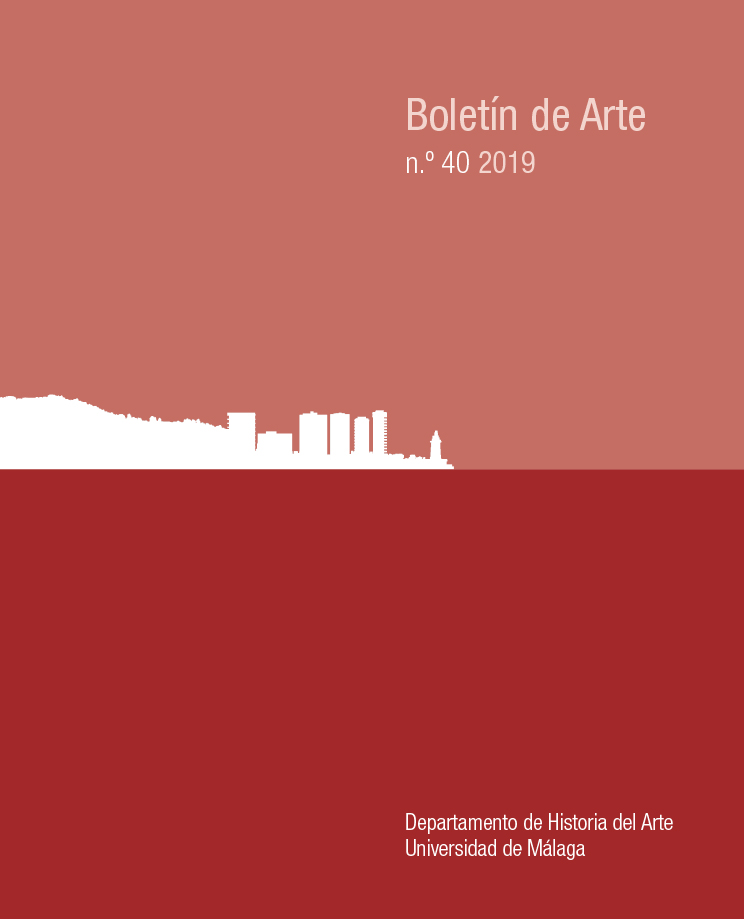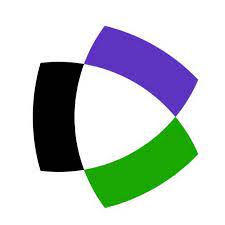Simia Manu Facta: Naruto’s Selfie and the Fringes of Creativity
DOI:
https://doi.org/10.24310/BoLArte.2019.v0i40.5776Abstract
The aim of the present paper is to study Naruto’s selfie in relation to some topic of the History of Art discourse such as the automatism of the photographic image, the classical topic ars simia naturae and creativity in the posthuman era. The paper analyzes how a selfie made by a monkey reveals a series of constant problems in History of Art concerned with images on the fringes (artistic, technical, social or human) and their struggles to be accepted in a canon.
Downloads
Metrics
Publication Facts
Reviewer profiles N/A
Author statements
Indexed in
-
—
- Academic society
- N/A
- Publisher
- Universidad de Málaga.
References
ANSTÖTZM, Christoph (1998), “Una comparación entre los seres humanos con discapacidad intelectual profunda y los grandes simios”, en CAVALIERI, Paola, SINGER, Peter, El proyecto “Gran simio”. La igualdad más allá de la humanidad, Trotta, Madrid, pp. 201-217.
BARTRA, Roger (1997), El salvaje artificial, Destino, Barcelona.
BATCHEN, Geoffrey (2004), Arder en deseos. La concepción de la fotografía, Gustavo Gili, Barcelona.
BAZIN, André (1990), ¿Qué es el cine?, Rialp, Madrid.
BREDEKAMP, Horst (2017), Teoría del acto icónico, Akal, Madrid.
CAVALIERI, Paola, SINGER, Peter (1998), El proyecto “Gran Simio”. La igualdad más allá de la humanidad, Trotta, Madrid.
CHÉROUX, Clément (2009), Breve historia del error fotográfico, Ediciones Ve, México D.F.
CHÉROUX, Clément (2014), La fotografía vernácula, Ediciones Ve, México D.F.
DE WAAL, Frans (2015), El bonobo y los diez mandamientos. En busca de la ética entre los primates, Tusquets, Barcelona.
DUBOIS, Philippe (2018), El acto fotográfico y otros ensayos, La marca editora, Buenos Aires.
EVANS, E. P. (1906), The criminal prosecution and capital punishment of animals, William Heinemann, London.
FONTCUBERTA, Joan (2016), La furia de las imágenes. Notas sobre la postfotografía, Galaxia Gutenberg, Barcelona.
FOX-TALBOT, Henry (2016), El lápiz de la naturaleza, Casimiro, Madrid.
GARCÍA, Gabriela (2018), Art brut. La pulsión creativa al desnudo, Sans Soleil, Vitoria.
GIRGEN, Jen (2003), “The historical and contemporary prosecution and punishment of animals”, Animal Law Review nº 9, pp. 97-133.
GLACKEN, Clarence J. (1996), Huellas en la playa de Rodas. Naturaleza y cultura en el pensamiento occidental desde la Antigüedad hasta finales del siglo XVIII, Ediciones del Serbal, Barcelona.
HARAWAY, Donna (1989), Primate visions. Gender, race and nature in the world of modern sciences, Routledge, London.
HARAWAY, Donna (1995), Manifiesto para ciborgs: ciencia, tecnología y feminismo socialista a finales del siglo XX, Universitat de València, Valencia.
HOFFMANN, D.L. et al. (2018), “U-Th davignon of carbonote crusts reveals Neandertal origin of Iberia cave art”, Science nº 359/6378, pp. 912-915.
JANSON, Horst W. (1976), Apes and ape lore in the Middle Ages and the Renaissance, The Warburg Institute, London.
LEE, Rensselaer W. (1982), Ut pictura poesis. La teoría humanística de la pintura, Cátedra, Madrid.
LUGON, Olivier (2010), El estilo documental: de August Sander a Walker Evans 1920-1945, Universidad de Salamanca, Salamanca.
MARTÍNEZ, Alejandro (2014), “La sonrisa del mono: una sátira de Herrera el mozo sobre el conocimiento de las artes”, Anuario del Departamento de Historia y Teoría del Arte, nº 26, pp. 43-54.
MAYAYO, Patricia (2003), Historias de mujeres, historias del arte, Cátedra, Madrid.
MORRIS, Desmond (1971), La biología del arte, Siglo XXI, México D.F.
ORDINE, Nuccio (2003), El umbral de la sombra. Literatura, filosofía y pintura en Giordano Bruno, Siruela. Madrid.
PFISTERER, Ulrich (2011), “Animal art/human art: imagined borderlines in the Renaissance”, en HÖFELE, Andreas y LAQUÉ, Stephan (eds.), Humankinds: the Renaissance and its antropologies, Berlín, De Gruyter, pp. 217-243.
ROSATI, Eleonora (2017), “The monkey selfie case and the concept of authorship: an EU perspective”, Journal of Intellectual Property Law and Practice, nº 12, pp. 973-977.
SIDERITS, Jonathan (2016), “The case for copyrighting monkey selfies”, University of Cincinnati Law Review, nº 84, pp. 327-348.
STOICHITA, Victor (2009), La sombra, Museo Thyssen, Madrid.
THOMSON, J. (1877), Public and private live of animals, Sampson Low, Marston, Searle & Rivington, London.
PLUMWOOD, Val (2003), Feminism and the mastery of nature, Routledge, London.
VEGA, Jesusa (2010), Ciencia, arte e ilusión en la España Ilustrada, Consejo Superior de Investigaciones Científicas, Madrid.
Downloads
Published
How to Cite
Issue
Section
License
Todos los contenidos publicados en la revista Boletín de Arte están sujetos a la licencia Creative Commons Reconocimento-NoComercia-Compartirigual 4.0 cuyo texto completo puede consultar en <http://creativecommons.org/licenses/by-nc-sa/4.0>

Los/as autores/as cuyas contribuciones sean aceptadas para su publicación en esta revista conservarán el derecho no exclusivo de utilizar sus contribuciones con fines académicos, de investigación y educativos, incluyendo el auto-archivo o depósito en repositorios de acceso abierto de cualquier tipo.
La edición electrónica de esta revista esta editada por la Editorial de la Universidad de Málaga (UmaEditorial), siendo necesario citar la procedencia en cualquier reproducción parcial o total.












4.png)
